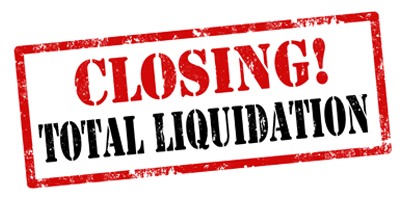10 Simple Techniques For Company Liquidation
10 Simple Techniques For Company Liquidation
Blog Article
Excitement About Company Liquidation
Table of ContentsThe Definitive Guide for Company LiquidationA Biased View of Company LiquidationExcitement About Company LiquidationLittle Known Facts About Company Liquidation.The Facts About Company Liquidation Uncovered
A liquidator is particularly assigned to look after the winding up of a company's affairs in order for it to be shut down commonly when the firm is going insolvent. The liquidator is an unbiased 3rd party who oversees the sale of company assets in order to pay off any exceptional debts.Their role consists of, yet is not restricted to: Objective Movie director: A liquidator is charged with serving as an unbiased 3rd party to look after the whole company liquidation process. Produce Statement of Affairs: Liquidators have to produce a detailed statement of affairs record. This file is distributed to lenders, detailing the existing monetary status of business at the time of its liquidation.
After the liquidation of a company, its presence is removed from Companies Residence and it stops to be a lawful entity. If supervisors navigated the procedure without problem, there would be no penalties or individual obligation for firm financial debts expected. Currently, with a fresh start, supervisors can check out brand-new company opportunities, though specialist examination is recommended.
The Ultimate Guide To Company Liquidation
If more than 90% of all business shareholders concur, liquidation can take location on brief notification within 7 days, the minimum legal notification for lenders. Typically, the larger the liquidation and the even more assets and funding the company has, the longer the procedure will take.

We understand that no two companies coincide, which is why we will make the effort to be familiar with your business so we can recommend the finest strategy for you. We only operate in your benefits, so you can be entirely certain in the solution we give.
Company Liquidation - An Overview
In the UK, there is a set procedure to shutting down or reorganizing a restricted business, whether it is solvent or bankrupt. This Learn More process is referred to as liquidation and can just be dealt with by an accredited insolvency specialist (IP) based on the Bankruptcy Act 1986. There are four primary kinds of firm liquidation procedure: Financial institutions' Volunteer Liquidation (CVL); Obligatory liquidation; Administration; and Members' Volunteer Liquidation (MVL).

In these conditions, it is vital that the company stops trading; if business proceeds to trade, the directors can be held personally accountable and it might cause the bankruptcy professional reporting wrongful trading, referred to as misfeasance, which might bring about lawsuit. The supervisors select a bankruptcy specialist and as soon as this has actually been agreed and confirmed, there is a conference with the shareholders.
Naturally, if there are no investors, this step of the process is not necessary (Company Liquidation). The IP takes control of the firm and begins the business liquidation procedure. The directors are no more involved in what takes place, including the sale of the company's possessions. Nonetheless, if the supervisors want any of the properties, they Resources can alert the IP.
Company Liquidation - Questions
The main difference is that the firm's lenders related to the court for an ending up order which requires the bankrupt business right into a liquidation procedure. In a lot of cases, creditors take this activity as a last option because they have not obtained payment via various other types of negotiation. The court appoints a bankruptcy professional, also understood as an official receiver, to perform the obligatory firm liquidation procedure.
This kind of business liquidation is not voluntary and supervisors' conduct is reported to the UK's Secretary of State once the liquidation process has been finished. For that reason, any kind of director that falls short to coordinate with the IP or has actually been included in supervisor misconduct, or a fraudulent act, may cause severe consequences (Company Liquidation).
It blog here is used as a way to safeguard the company from any lawful activity by its creditors. The supervisors of the company agree to make regular payments to settle their financial obligations over a period of time.
4 Easy Facts About Company Liquidation Explained
This provides the business with time to establish a strategy moving forward to rescue the firm and prevent liquidation. At this point, directors hand control of the business over to the appointed administrator. If a business is solvent but the directors and shareholders wish to shut the organization, a Participants Voluntary Liquidation is the right option.
The company liquidation procedure is handled by a liquidator designated by the supervisors and shareholders of the company and they must authorize a statement that there are no creditors continuing to be. The liquidation process for an MVL is similar to that of a CVL because possessions are realised yet the earnings are distributed to the supervisors and the investors of the business after the liquidator's fees have actually been paid.
Report this page